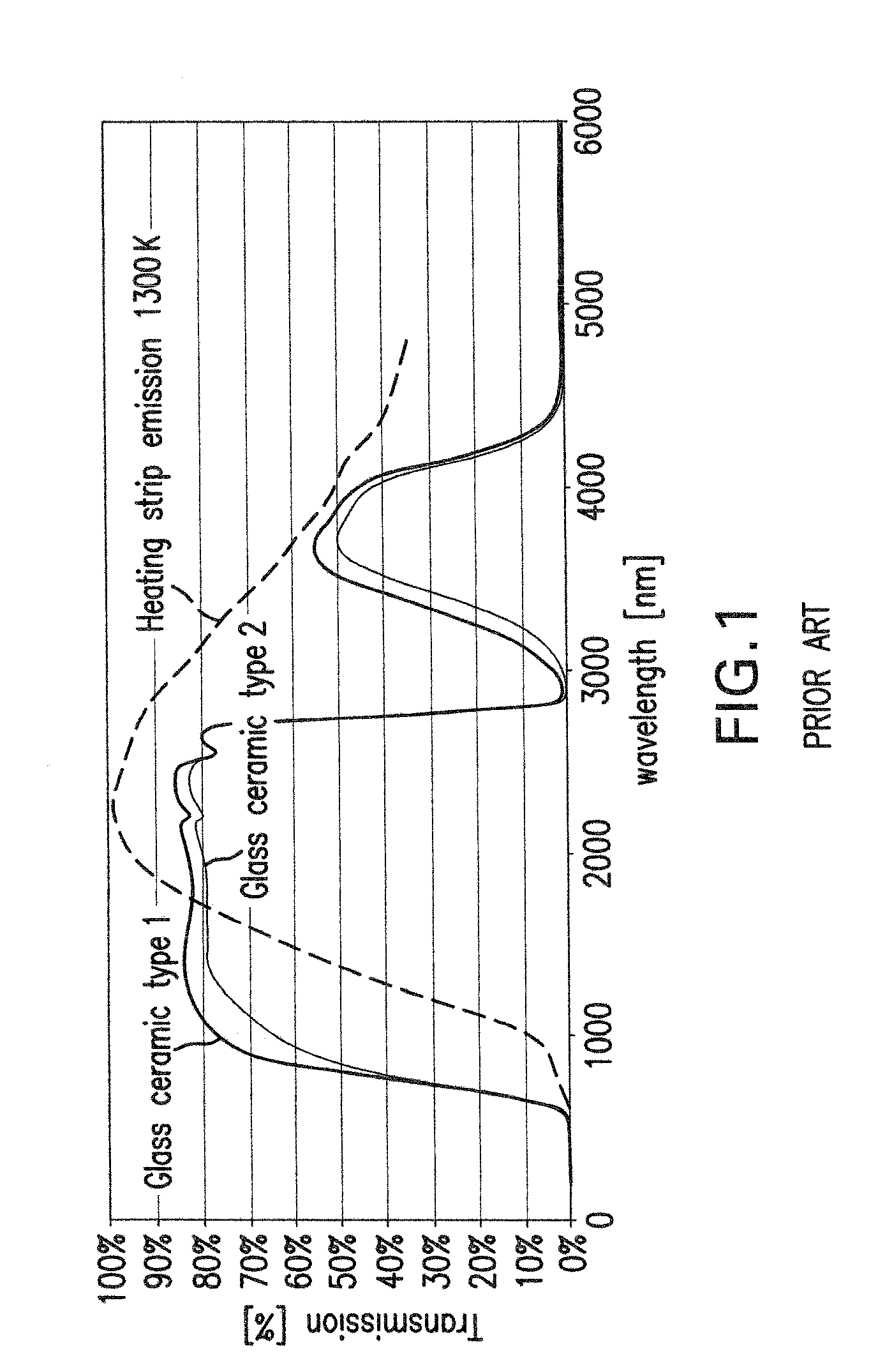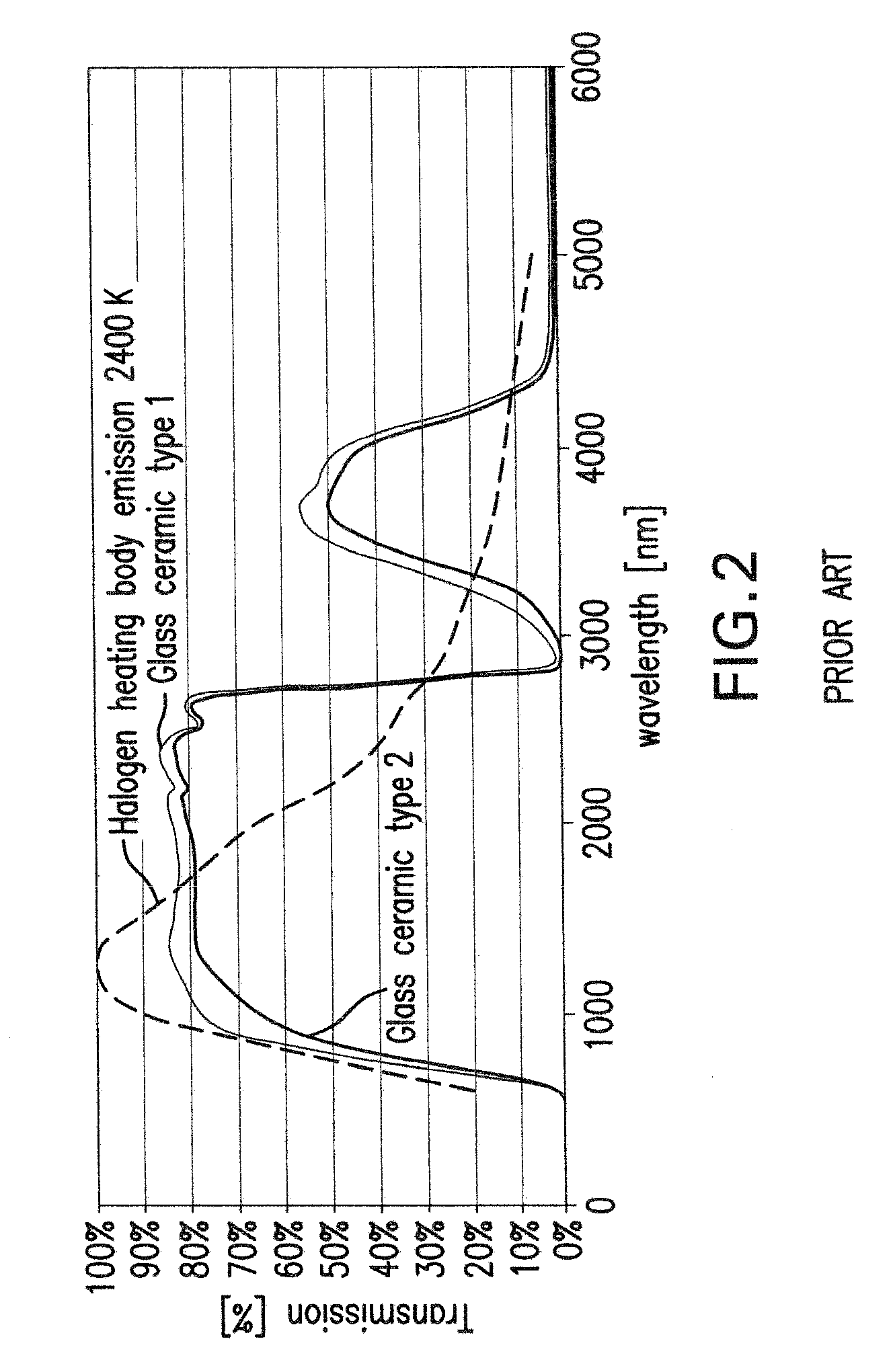Method of making interchangeable glass ceramic tops for a cooking stove
a technology of glass ceramics and cooking stoves, which is applied in the direction of heating arrangements of hot plates, heating elements of heating elements, electrical appliances, etc., can solve the problems of high storage and logistics costs, product cannot be further modified, and the proposed formation of the cooking surface underside is not possible, so as to achieve the effect of higher ir spectral transmittan
- Summary
- Abstract
- Description
- Claims
- Application Information
AI Technical Summary
Benefits of technology
Problems solved by technology
Method used
Image
Examples
Embodiment Construction
[0024]The emission spectrum of a heated strip with a radiation temperature of 1300 K is shown in FIG. 1. The transmission in % of two exemplary glass ceramics of type 1 and type 2 are also illustrated in FIG. 1. The heating strip has a radiation intensity maximum at 2200 nm. The type 1 glass ceramic has a transmission of about 83% at this point and the type 2 glass ceramic has a transmission of about 78%.
[0025]The basic concept of the present invention is to reduce the transmission of a glass ceramic top made with the type 1 glass ceramic by providing a suitable coating or by roughening the surface in the vicinity of the cooking area sufficiently so that it corresponds to the transmission of a glass ceramic top made with the type 2 glass ceramic. Thus the glass ceramic top made with type 1 glass ceramic but provided with the coating or roughening of the surface is interchangeable with the glass ceramic top made with the type 2 glass ceramic. As a result it can replace the glass cera...
PUM
| Property | Measurement | Unit |
|---|---|---|
| temperature | aaaaa | aaaaa |
| temperatures | aaaaa | aaaaa |
| temperature | aaaaa | aaaaa |
Abstract
Description
Claims
Application Information
 Login to View More
Login to View More - R&D
- Intellectual Property
- Life Sciences
- Materials
- Tech Scout
- Unparalleled Data Quality
- Higher Quality Content
- 60% Fewer Hallucinations
Browse by: Latest US Patents, China's latest patents, Technical Efficacy Thesaurus, Application Domain, Technology Topic, Popular Technical Reports.
© 2025 PatSnap. All rights reserved.Legal|Privacy policy|Modern Slavery Act Transparency Statement|Sitemap|About US| Contact US: help@patsnap.com



